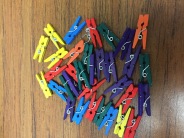
I have recently learned a new word, liminal space. Indulge me as I share a definition with you.
The liminal space can be seen as a transformative space. It occurs when things such as our thoughts, knowledge or ideas are in some way challenged, when our understanding of something is unsettled rendering it fluid. That space of in-between is a state of liminality, a transition in the learning process, the crossing of a threshold. From here we begin to reconfigure our prior understandings, perspectives and conceptual schema. We let go of the conceptual stance we had. Once we reach this post-liminal mode the shift is irreversible and “alters our way of being in the world”. (O’Sullivan as cited in Meyer, Land & Baillie).
We are at the start of September, on the brink of meeting new groups of students who will bring with them life experiences, hunger to learn, need to challenge, and always the ability to push us to new levels of learning. We are in a liminal space.
Over the summer, as business faculty colleagues, we shared our learnings, with a great deal of focus being on the technology of making on-line learning most effective.
As we now prepare for classes to begin next week, making sure the course outlines are completed and submitted, assessments figured out, technology working, welcome videos created, and so on…I would like to invite you to pause for a moment. Let’s put technology aside and think about the humans we are preparing this material for. Who are they? Where are they from? What do they enjoy? What are their fears? What are their dreams and aspirations? What liminal spaces have they been experiencing as together we transition from the familiar to the unknown?
As professors, how are we going to discover this important information giving us a peek into the lives of these amazing humans? We have learned that teaching concepts on-line takes more time than in a face-to-face context, making it challenging to get through all the material we are accustomed to. We have also learned that content needs to be delivered both synchronously and asynchronously. And, we know that facilitating interaction with students on-line is challenging, but oh so very vital!
As you work on your lesson plans, can I invite you to intentionally build in 10 minutes to connect with the students, and help them connect with each other? Give them time to ‘arrive’ in the space. Help them to get to know who they are learning with, and help them get to know you as a person, not just a Prof. When students feel like they belong, are safe, and have a voice, they will engage and learn so much more. And remember to combine on-screen and off-screen activities…screen fatigue is a real thing (as you know!).
I trust your liminal space experience will result in exciting things as together we re-write the learning adventure.
aleksandar-popovski-D_-GgBwq4og-unsplash.jpg

 So where am I going with this, especially with a blog title of ‘Thinking about thinking’? In my lifetime I have completed many assessments: True Colours, What Color is Your Parachute?, Anchors, StrengthsFinder, MBTI, Values-Based-Indicators, DISC to name a few. Each one of them have contributed to my self-understanding, but to what end? In college, we use various assessments to help students learn who they are, how they perform, what matters to them, what they should do with their lives…again, to what end?
So where am I going with this, especially with a blog title of ‘Thinking about thinking’? In my lifetime I have completed many assessments: True Colours, What Color is Your Parachute?, Anchors, StrengthsFinder, MBTI, Values-Based-Indicators, DISC to name a few. Each one of them have contributed to my self-understanding, but to what end? In college, we use various assessments to help students learn who they are, how they perform, what matters to them, what they should do with their lives…again, to what end?
 ruminate, to probe, to ponder, and to enter into meaningful dialogue to further explore the ramifications of each.
ruminate, to probe, to ponder, and to enter into meaningful dialogue to further explore the ramifications of each.